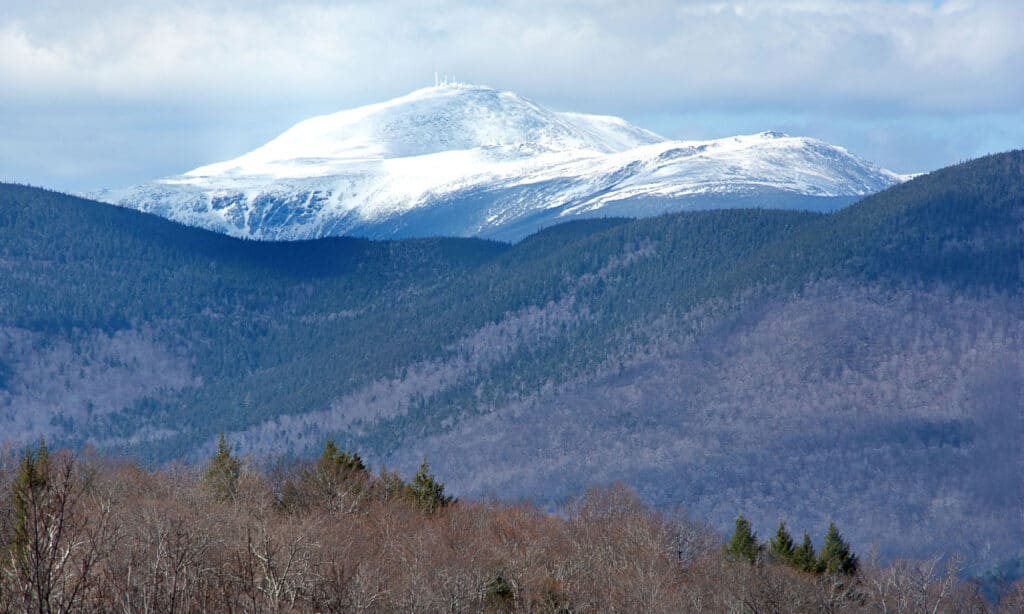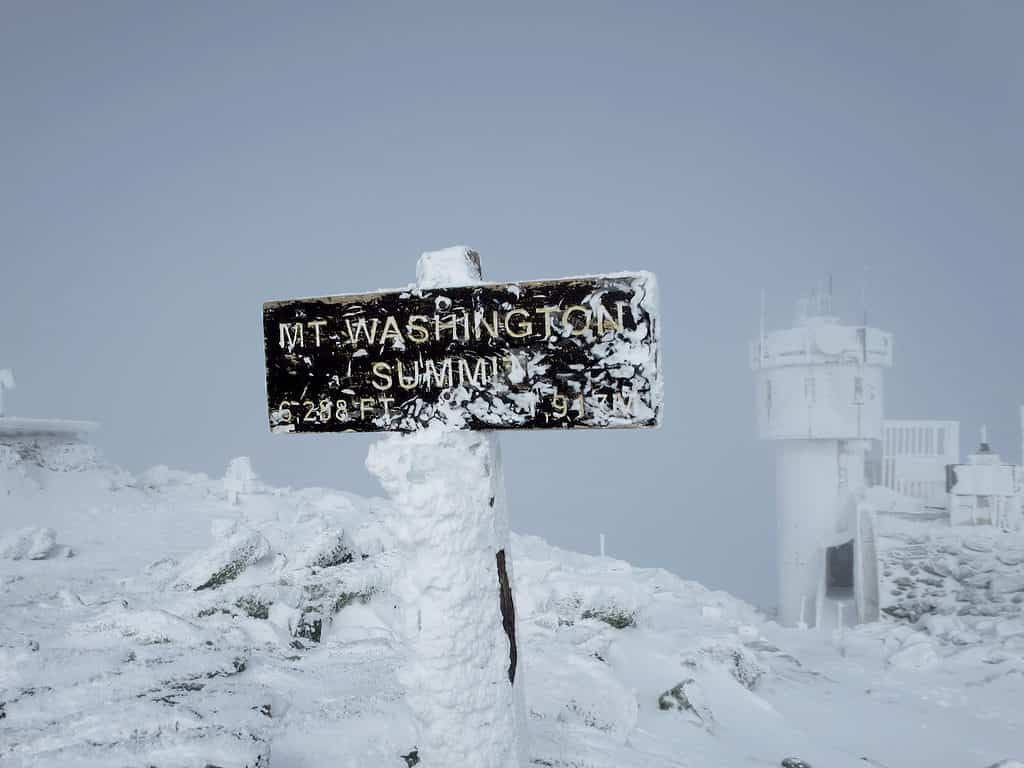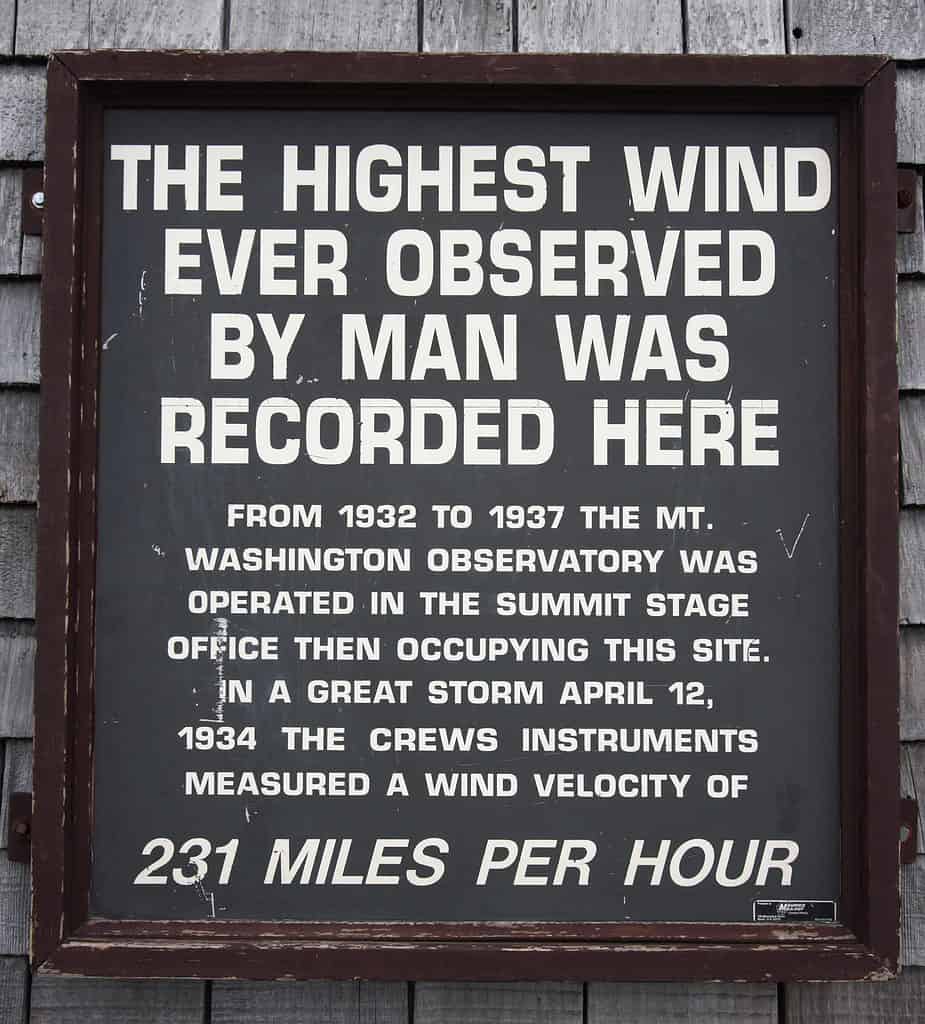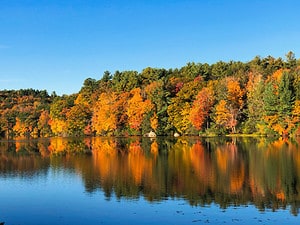The first February weekend in 2023 will be long-remembered by residents in the United States’ northeast, and it has nothing to do with a groundhog in Pennsylvania. A fierce arctic blast sent temperatures and wind chills tumbling well below zero late Friday, February 3 and into the early morning hours of Saturday, February 4. In Rhode Island’s capital of Providence, the low temperature dropped to -9°F, breaking the previous record of -2°F for that date. Hartford, Connecticut also hit -9°F, breaking its old record of -8°F. And Worcester, Massachusetts dipped to a bone-chilling -13°F, well below its previous record of -4°F. But none of those frigid temperatures come close to the record-shattering cold that was observed in New Hampshire, prompting some to compare it to a miniature ice age.
The World’s Worst Weather

Mt. Washington is the highest peak in the northeastern United States.
©iStock.com/Gerald G Gantar
Mt. Washington in New Hampshire often features some of the worst weather found anywhere on the planet. With an elevation of 6,288 feet, this mountain in the Presidential Range is the highest peak in the northeastern United States. It is a popular destination for hikers and outdoor enthusiasts who have a taste for adventure, but even in the summer, the mountain can feature some wicked weather. State park rangers and New Hampshire’s Fish & Game officers are often sent on missions to rescue stranded hikers. In the winter, though, Mt. Washington only grows in its fearsome reputation. But the events of early February 2023 have never been seen before, even during the worst Mt. Washington winters. What transpired could be described as near-apocalyptic.
In the late-night hours of February 3, the temperature atop Mt. Washington dropped to a bitter -46°F. The wind gusts of 127 mph sent the windchill down to an utterly staggering -108°F.
Into The Stratosphere
This incomprehensible cold actually brought the peak of Mt. Washington into the stratosphere, the atmospheric layer just above the troposphere. It is an event known as a tropopause fold. This rare event only occurs during the absolute harshest blasts of winter.
Typically, the bottom of the stratosphere is found from 30,000-50,000 feet. During an exceptionally cold blast of arctic air, the cold air in the atmosphere sinks and forces the troposphere to lower levels. On the night of February 3-4, the line between the troposphere and the stratosphere descended to just over 5,000 feet. That meant the summit of Mt. Washington was actually in the stratosphere.
A New Record

Mt. Washington is well-known for its dangerously erratic weather.
©iStock.com/mountainguy
The incomprehensible -108°F wind chill is likely the lowest wind chill ever recorded in the U.S., including Alaska. There have been three recorded -100°F wind chill events in U.S. history, and all of them have been at the summit of Mt. Washington. The event of February 2023 was the lowest of them all.
There is one possible date that may tie the record, but it occurred before the formula for calculating wind chills was developed in 1945. It happened on January 22, 1885, when a low temperature of -50°F was recorded on Mt. Washington (a record that still stands today) with an average wind speed of 89 mph. Experts say that could have produced a -108°F wind chill.
Whether it was a tie or a record, the wind chill atop Mt. Washington in early February 2023 was other-worldly. In fact, the -108°F wind chill may even be the lowest wind chill ever measured on earth. There have likely been colder wind chills in Antarctica, but none of them have been officially measured.
Recording History
A crew from Mount Washington Observatory was on the summit for the entirety of this once-in-a-lifetime storm. Every 15 minutes, they opened the door to the observatory and stepped out onto the observation deck where they could measure the air temperature with a sling psychrometer. Typically that is done hourly, but they wanted to “sling” more often to record the most accurate possible measurements.

This sign reminds visitors of Mt. Washington’s infamous reputation for extreme weather, including the world’s highest wind gust.
©David P. Lewis/Shutterstock.com
Mt. Washington’s history of violent weather was well-established even before this arctic blast. On April 12, 1934, a wind gust of 231 mph was recorded by the instruments atop Mt. Washington. It’s the highest recorded wind gust anywhere in the world that was not created by a tornado or tropical cyclone.
Mt. Washington (or Mt. Wash, as many local New Hampshire residents call it) has certainly earned its reputation as the location with the worst weather in the world.
Up Next:
- Discover the 7 Deadliest Mountains In The United States
- Discover the 5 Coldest States in February
- The 5 States With the Most Dangerous Blizzards
- What Is the Snowiest Place On Earth?
- The 6 Best Books About Weather Ranked by Difficulty
The photo featured at the top of this post is © The Pilot's-Eye View/Shutterstock.com
Thank you for reading! Have some feedback for us? Contact the AZ Animals editorial team.






